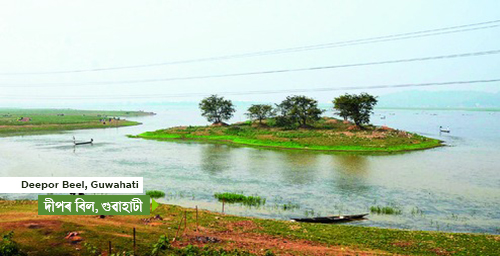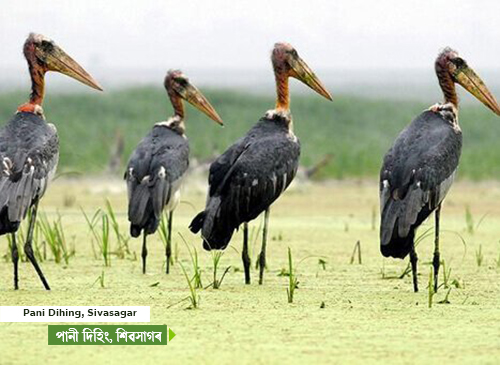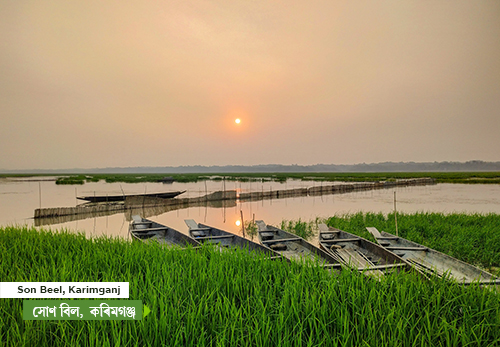Beels – The saviour of Nature

Assam is dotted with beels (wetlands) which are hosts to a number of migratory birds. They are also rich in various aquatic flora and fauna. They add to the mesmerising beauty of Assam’s unique landscape. The beels are a prime reason as to why Assam is called a biodiversity hotspot. Conserving this phenomenon of nature is the best way forward to combat natural calamities such as flood and erosion.
Beel and its significance
– Prevents flood by holding and soaking water like a sponge
– Purifies surface water
– Filters out waste and pollutants
– Provides moist to soil and air during dry season
– Saves the ecosystem
If you are in pursuit of natural rejuvenation and want to witness nature at its best, then visiting in one of these beels may truly make you feel enriched.
Deepor Beel, Guwahati

Deepor Beel, which is one among India’s 27 listed Ramsar sites, is located on the south-west of Guwahati city. The beel is guarded by steep highlands on the north and south. It is a home to several aquatic plants such as giant water lily, water hyacinth, aquatic grasses, water lilies and other submerged, emergent and floating vegetation. This freshwater lake serves as a source of livelihood for villagers.
Pani Dihing, Sivasagar

Pani Dihing Beel is located inside Pani Dihing Wildlife Sanctuary in the northern part of Sivasagar district of Assam. Home to many migratory birds, this beel welcomes birds such as grey leg goose, mallard, wigeon, shoveller, common pochard and many others.
Samaguri Beel, Nagaon
Get mesmerised by the scenic view of this beel, which is located 16 km towards east Nagaon district. Formed by the abandoned path of Kolong river with the course of time, this beel turned into a famous tourist spot.
Son Beel, Karimganj

Unique thing about this beel is that it becomes a farm land during winter and turns into wetland in summer. This seasonal lake harbours various types of fish and gives out a picturesque view with hills surrounded on both east and west sides of the beel.
Batha Beel, Darrang
An ideal spot for bird watching, Batha Beel is a safe haven for different species of migratory birds. Situated near Hazarikapara (Sipajhar), this scenic spot has several other naturally-rich sites around. The beel has historical significance as well.
Kapla Beel, Barpeta
One of the least explored spots having tourism potential, this beel in Barpeta district harbours several dozens of fish species and other avian fauna. The beel covering around 80 hectares is a one of the biggest wetlands on Brahmaputra floodplain. It is a primary source of livelihood for several thousand fishermen. The southern outlet of Kapla beel meets Brahmaputra river although the channel is almost blocked now.
Dheer Beel & Diplai Beel
Known for their rich biodiversity and fresh water, Dheer Beel and Diplai Beel in Chakrashila Wildlife Sanctuary under Kokrajhar and Dhubri districts respectively are major habitats of many species of migratory birds. Besides, these beels are abound with floating vegetations, emergent and submerged vegetations.



Total Comments - 0